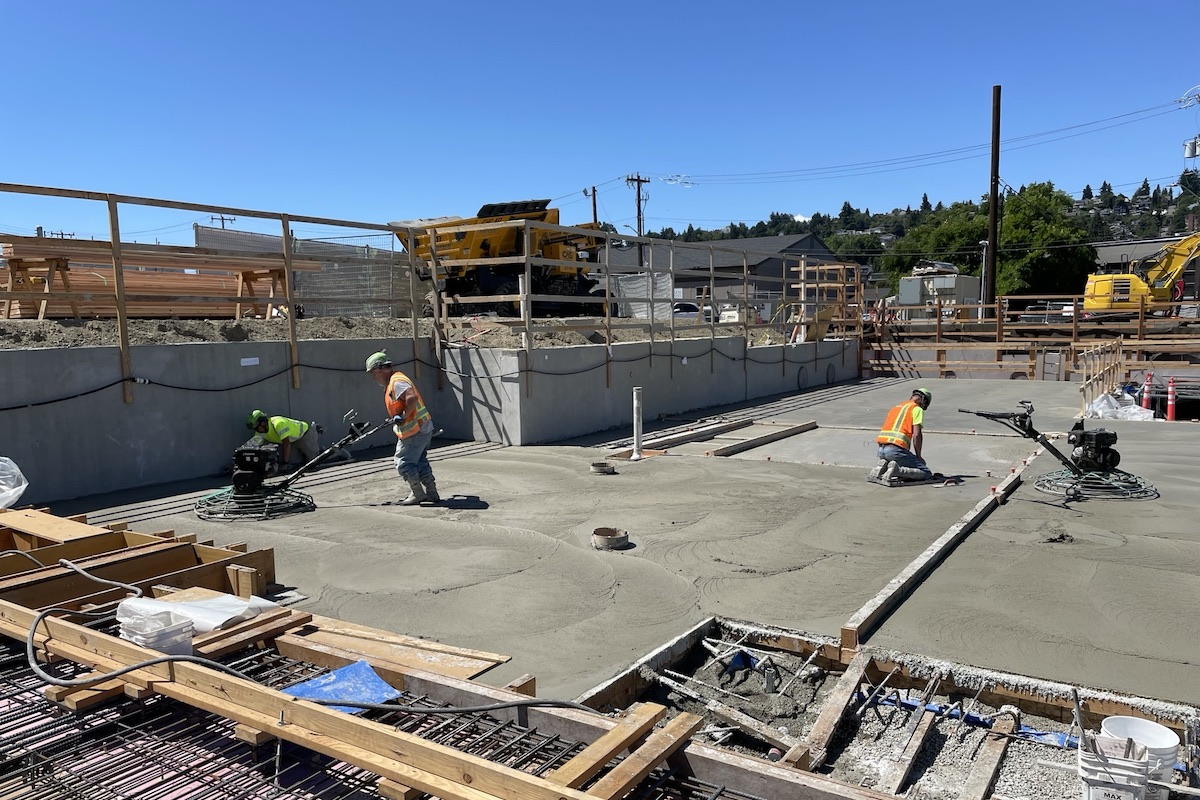“Our climate is changing, and we are already being affected from the effects of climate change in the form of extreme heat, floods, extreme precipitation, drought, wildfires, and many other extreme weather events — many of which are becoming more intense, happening more often, and lasting longer,” said Monika Serrano, Resilience Program Manager at Turner.
In a companywide initiative to strengthen its projects, Turner supports clients to construct structures with future climate in mind, using not only historical climate trends but also scientific predictions.
“Incorporating climate resilience is risk management and is active caring for our clients and our communities,” Serrano said.
“Many clients trust our expertise and knowledge, and because of this, we can influence design even if the project is not design-build,” Serrano said. “We support clients as they make decisions on where to build. We recently performed a climate resilience analysis for a client who was choosing among different geographical locations, although it is more common that our clients have chosen a location already when we get involved.”

| Your local Trimble Construction Division dealer |
|---|
| SITECH Northwest |
Turner often shares future climate estimates for project locations with clients.
“It makes them aware of climate risks,” Serrano said. “We are equipped to support them when making decisions on incorporating resilient features in their building, depending on where the building is, the type of building, and the client’s resilience priorities.”
Up front, building in resiliency adds cost to a project as compared with building to meet codes. However, according to Serrano, “In the lifetime of the building, incorporating resilience usually saves operating capital. A resilient building generally gets back to operations faster, requires less repairs, [and] provides more safety and better quality of life to occupants during and after an extreme weather event.”
Incorporating resilience requires architects and contractors to proactively include incorporating resiliency features into a project.
“We human beings are optimists and don’t tend to think very long term, for many reasons, so it does not come natural to invest in something today that will provide value later,” Serrano said. “It is simply not in our nature to prepare for disasters. That is OK in a world that does not change, but it is not serving us in a world with a climate that is already changing and will continue to change.”
The team added foundation reinforcement and waterproofing along the north elevation of the first floor. Then at the loading dock and doors for staff to enter, crews installed flood gates — similar to watertight doors, like those on naval vessels. It takes two museum facilities staff to close the gates, which have thick aluminum plates that lock with steel plates in the building’s walls to keep the river water out.
The museum’s electrical equipment sits on 14-inch platforms in case water enters. Crews installed structural support to accommodate a deployable 16.5-foot StopLog system. To protect the museum’s glass walls during a storm, facilities staff members bolt horizontal aluminum “logs” in place on vertical aluminum posts on the building’s perimeter. The museum displays its art on the upper levels of the museum.
In a joint venture with McKissack & McKissack of Washington, D.C., Turner demolished two buildings on the damaged health care facility campus and built a $640 million, 10-story, 365,000-square-foot hospital. The design-construction team placed the emergency department on the second floor. The mechanical and electrical equipment and two generators are on the fifth floor and are protected by a metal-panel curtain wall, which is part of the panelized curtain wall system for the whole building. On the first floor, concealed fabric and aluminum-plank flood barriers limit the amount of flooding.
Around the hospital’s perimeter, Turner installed a 4-foot-tall, 2,065-foot-long floodwall with metal sheet Z-piles encased in concrete. It features self-rising and sliding barriers at the entrances. The system should withstand a 500-year flood event. The glass curtain wall was designed to withstand hurricane force winds and large flying debris. The Federal Emergency Management Agency funded the project.
Charlie Whitney, Vice President and General Manager of Turner, predicted in a statement that this solution will have “an in-depth positive impact on this vibrant community and much of Lower Manhattan.”
In addition, the New Jersey Department of Property Management and Construction awarded E.E. Cruz & Company of Whitestone, New York (owned by Turner and Flatiron of Broomfield, Colorado) a $251 million contract for work on the Rebuild by Design - Hudson River Project to boost resiliency in Hoboken, Weehawken, and Jersey City. The project aims to reduce flooding from heavy rainfall, high tides, and major storm surges.
The work entails building more than 9,000 linear feet of reinforced concrete floodwalls, with 28 floodgates and stoplog barriers. The team also will modify the landscaping, seating, and lighting at Harborside Park.
Turner — in collaboration with researchers from the University of New Mexico, Indiana University, and La Isla Network in Alpharetta, Georgia — recently completed a pilot study to gain a greater understanding about the effects of heat on the health of its workforce. Company officials recognize that outdoor working conditions also are affected by climate changes. The study found that 43 percent of the 33 workers participating in the study experienced peak core temperature readings greater than 100.4 degrees Fahrenheit. The team also found most workers arrive at the job site dehydrated, leading Turner to educate employees about the value of hydration.
In another example, depending on the season, Turner provides warming and cooling stations on some projects to ensure workers stay comfortable and healthy.
“Active caring is part of our culture,” Serrano said. “As our planet warms, we are aware of the risk extreme heat poses to our workforce, who are the essence of the construction industry.”
Photos courtesy of Turner Construction Company











































































